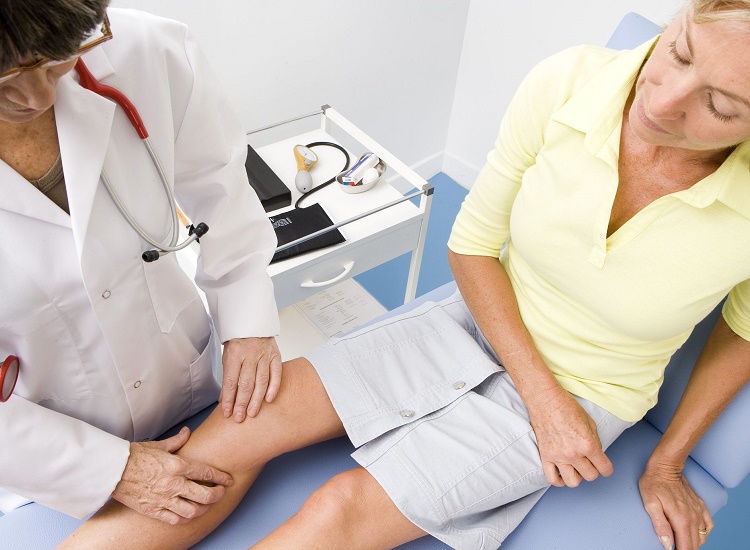Maryland is a Mid-Atlantic state in the US, sharing borders with Virginia, the District of Columbia, West Virginia, Pennsylvania, Delaware, and the Atlantic Ocean. If you live in Maryland, the humid subtropical type of climate in your area may have contributed to your joint pain and bursitis. Many people experience more joint pain and arthritis due to high humidity levels in the air surrounding them. Changes in humidity and temperatures can change your joints’ fluid levels, causing joint pain and conditions like bursitis.

Bursitis refers to the bursa’s inflammation, a sac filled with fluid lying between the tissues to prevent injury and friction. The condition most commonly affects the hip, back, and knee areas, but it can happen in many other parts of the body. Over 150 such sacs in the body reduce friction to make movements more manageable and prevent injury. However, with age and overuse, the bursa gets inflamed and results in painful bursitis.
If you are in Maryland, the US, and suffering from bursitis, seeking help from the best Maryland pain clinic is inevitable. Certified experts in these clinics can help diagnose and treat your condition so that you can get back to your everyday life soon. They can also suggest some steps and lifestyle changes to prevent such conditions in the future. Here you will come to know why you must consult a pain management specialist for bursitis.
Help with Diagnosis
Depending on your physical examination and medical history, a pain management specialist can diagnose your bursitis. If needed, they may also include testing with imaging tests and lab tests. These include:
- Imaging tests: Although X-ray cannot diagnose bursitis, it can rule out other causes of your condition. If a physical examination is not enough to establish bursitis, the specialist may recommend MRI or ultrasound.
- Lab tests: The specialist may order a blood test or request an analysis of fluids in your inflamed bursa to identify the cause of your pain and inflammation.
Identification of the Cause
Identifying the cause is vital before a specialist can start your treatment and therapy. The most common causes are:
- Age: In 2015, Maryland had a population of 5.8 million, out of which 18.35% were aged over 60. According to estimates, this percentage is likely to reach 25.4% by 2030. Besides that, people aged 80 to 84 are the fastest-growing segment of Maryland’s population.
With age, your tendons become less elastic, they are easier to tear, and they cannot handle much stress like before. Therefore, bursitis is a common condition in adults aged 40 years or more.
- Repeated Pressure: You may develop bursitis due to activities that put repetitive pressure on a particular area or joint, such as carpentry, scrubbing, tennis, skiing, golfing, gardening, shoveling, painting, raking, etc. If you belong to these professions or a novice or experienced athlete or sportsperson in Maryland, you may be prone to pressure. You may also have it due to standing or sitting in the wrong position for long hours at home or work.
- Other conditions: Other conditions may also increase your risk of having bursitis, such as thyroid disorder, psoriatic arthritis, gout, rheumatoid arthritis, etc. Infections like Staphylococcus aureus bacterial infection can also cause bursitis.
Guidance for Treatment
If you have been diagnosed with bursitis, specialists at the best Maryland pain clinic will give you the right course of treatment. These include:
- Rest:
They may prescribe you a sling or tensor bandage to immobilize the inflamed area to give it rest so that it gets time to recover.
- Medicines:
If your bursa has been infected, the pain management specialist may prescribe you medicines like antibiotics, corticosteroids, NSAIDs, painkillers, etc., to treat the infection and make you feel better.
- Weight Loss:
In Maryland, 17.6% of youth between 10 to 17 are obese. 32.3% of adults in Maryland are also obese, placing the state on 25th rank out of 51 states in the US. A pain management clinic may also make a weight loss program for you to reduce pressure from your joints and relieve bursitis.
- Physical Therapy:
Target physical therapy is effective in recovering from existing inflammation and preventing the new condition.
- Surgery:
If medicines and therapies fail to relieve your condition, you may need surgery to remove your inflamed bursa. The physician may also recommend aspiration to drain excess fluid from the bursa to reduce pain and inflammation.
- Prevention:
Apart from diagnosing and treating your condition, qualified specialists will also guide you about how to prevent bursitis, such as using kneeling pads, lifting correctly, taking frequent breaks in between repetitive tasks, and maintaining a healthy weight.
According to a US Centers for Disease Control & Prevention research, in 2002, around 10.5 million US people said they had severe joint pain, and by 2014, this number jumped to 14.6 million. So, if you are situated in Maryland and suffering from bursitis, get in touch with the best Maryland pain clinic in the state and ease your discomfort.
Leave a Reply